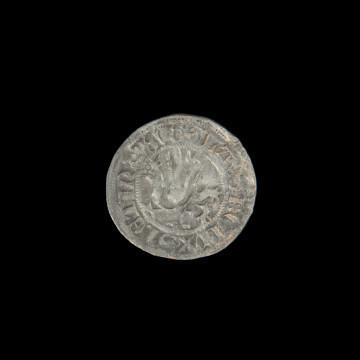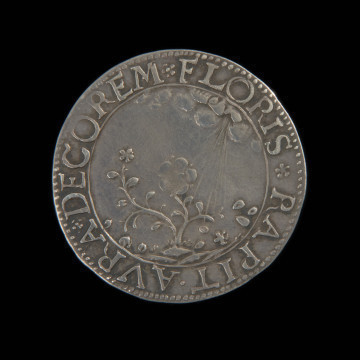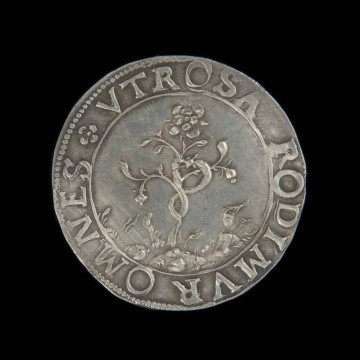
Shilling
1492
National Museum in Szczecin
Part of the collection: Pomeranian coins
Gold coins appeared in Europe in the middle of the 13th century. They were most often called florins, but also guilders and ducats. The name 'guilders' became widespread in German countries, and the Emperor supervised their production. In West Pomerania, guilders were first minted at the turn of 1498/1499. Duke Bogislaw X issued a short golden issue after receiving permission from Emperor Maximilian I. The coins did not enter into circulation, but their creation was one of the most remarkable events of the monetary reform, which was part of the sequence of Bogislaw X's reform activities. The money unification in the state and the introduction of a bimetallic monetary system were of great prestige and political importance in the struggle with Brandenburg. It contributed to maintaining the independence of the Duchy of Pomerania as a direct imperial fiefdom. The unique character of Pomeranian guilders results from the short period of their production and the content of their stamps. They are dominated by the symbolism of a unified state and religious content. Iconographically, the obverse stamp shows a four-field shield on a long cross, emphasising the unity and indivisibility of the Pomeranian state, united by Duke Bogislaw X in 1478. The image of the Madonna and Child surrounded by rays on the reverse is unique. It was adopted from Germany, where the cult of the Virgin Mary was widespread, and what mattered in the market was the recognisability of iconography and trust in the coin. Bogislaw X's gold guilders were an ephemera in Pomerania; other coins made of gold did not appear until a century later, during the reign of Duke John Frederick. Due to the lack of own resources of precious metals in the country and poor finances, further issues were also limited. Duke Bogislaw's guilders are very rare and can occasionally be found on the collector's market. The museum copy comes from a German physician and collector, Prof. Helmut Hahn's Pomeranian collection, which was sold in its entirety at auction in Berlin in 2013.
Genowefa Horoszko
.Other names
Goldgulden
Author / creator
Dimensions
cały obiekt: height: 0.7 mm, diameter: 23.3 mm
Object type
coin
Technique
minting
Material
gold
Creation time / dating
Creation / finding place
Owner
National Museum in Szczecin
Identification number
Location / status

1492
National Museum in Szczecin

1617
National Museum in Szczecin

1618
National Museum in Szczecin
DISCOVER this TOPIC
Museum of King Jan III's Palace at Wilanów
DISCOVER this PATH
Educational path